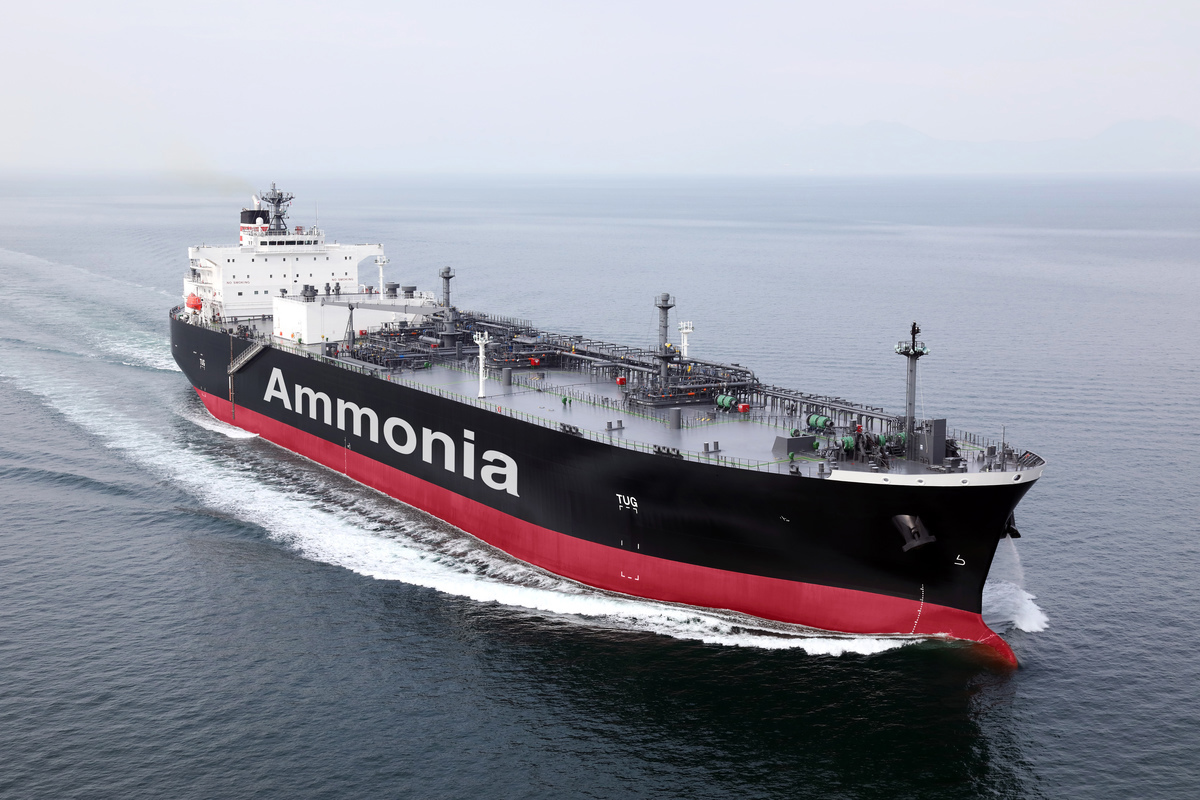Safety hazards a big concern for ammonia uptake in shipping – Global Maritime Forum
It says ammonia usage in shipping will remain limited until all safety concerns are addressed and proper risk management policies are implemented.
 PHOTO: A concept model of NYK’s ammonia-fuelled ammonia carrier. NYK
PHOTO: A concept model of NYK’s ammonia-fuelled ammonia carrier. NYK
The Global Maritime Forum has been working with the Mærsk Mc-Kinney Møller Center for Zero Carbon Shipping and other industry players on the so-called NoGAPS (Nordic Green Ammonia Powered Ship) project.
NoGAPS is co-funded by the Nordic Innovation fund and the initial concept study phase of the project ran between 2020-2021. The project has now moved to its second phase which focuses on an initial concept design of an ammonia-powered ship and how the ship can be constructed.
The project is aimed at helping the shipping industry to gain a better understanding of potential safety risks around ammonia, Mærsk Mc-Kinney Møller Center’s ship design manager Thomas McKenney said at a webinar organised by Global Maritime Forum today.
McKenney said that while ammonia is currently shipped globally as cargo, risks involved in using ammonia as a fuel are still largely unknown. He added that because the fuel is extremely toxic, thorough risk assessments must be carried out during the vessel design phase itself.
Recent safety studies conducted under the NoGAPS project have designated fuel preparation room and tank connection areas onboard ammonia-powered vessels as high-hazard areas for both crew and vessel, A.P. Moller Maersk’s senior technology manager Claus Rud Hansen said. He informed that engine rooms and tank areas on decks have also been marked as medium-hazard areas in the studies.
Hansen argued that by implementing risk mitigation strategies during the ship design phase, some of these risks can be lowered to a tolerance level. By implementing measures such as water curtains at bunker stations, and restricting crew access to certain areas, some of these risks can be mitigated, Hansen said.
Fuel handling rooms are among the riskiest areas onboard ammonia-powered vessels, McKenney said. Ammonia leakages could happen in these spaces if pipes are ruptured. McKenney argued that by implementing automated ventilation systems in these critical areas, some of these risks can be reduced.
Risks can be further reduced by keeping crew movements to a minimum in fuel handling rooms, McKenney added.
Integrating new ammonia technologies with existing ones can be a challenge, especially during the ship design phase as they need to work safely together, Breeze Ship Design’s naval architect Sven Rolfsen said.
Gas carrier vessels are typically the best vessels to operate on ammonia as they are built according to the stringent International Code of the Construction and Equipment of Ships Carrying Liquefied Gases in Bulk (IGC code), BW Epic Kosan’s fleet manager of HSE and compliance Mayank Bhatt said.
Bhatt argued that safety compliance on these gas carriers is implemented during the design phase itself. He doubts whether vessels in other segments than gas carriers can incorporate similar ammonia safety measures.
By Nithin Chandran
Please get in touch with comments or additional info to news@engine.online





